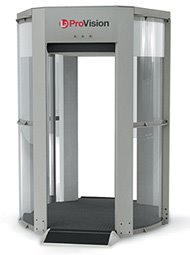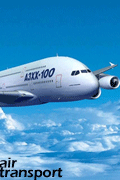Wednesday, March 4, 2009
 TSA will pilot millimeter wave technology in the place of the walk-through metal detector at six airports and will examine the operational efficiency of this configuration. This configuration will be used at airports in: San Francisco, Miami, Albuquerque, Tulsa, Salt Lake City and Las Vegas.
TSA will pilot millimeter wave technology in the place of the walk-through metal detector at six airports and will examine the operational efficiency of this configuration. This configuration will be used at airports in: San Francisco, Miami, Albuquerque, Tulsa, Salt Lake City and Las Vegas.Passengers are reacting positively to the millimeter wave technology pilots currently taking place at 20 airports around the country. TSA is committed to continually exploring and testing technologies that enhance security and will continue to examine them in new configurations to maximize their potential.
Millimeter wave technology will remain voluntary for passengers; those who do not wish to receive millimeter wave screening will undergo metal detector screening and a pat-down.
Passenger imaging technologies, like millimeter wave, enable TSA to detect prohibited items including weapons, explosives and other metallic and non-metallic objects concealed under layers of clothing without physical contact.
Passenger privacy is ensured through the anonymity of the image. The officer attending the passenger cannot view the image, and the officer viewing the image is remotely located and cannot see the passenger. Additionally, the image cannot be stored, transmitted or printed and is deleted immediately after being viewed. Finally, the facial area of the image has been blurred to further ensure privacy.
Millimeter wave technology passes harmless electromagnetic waves over the human body to create an image that looks much like a fuzzy photo negative. It is safe and the energy emitted by millimeter wave technology is 10,000 times less than a cell phone.
posted by transport blogs
@ 4:16 AM
permanent link | Post a Comment
|
![]()









